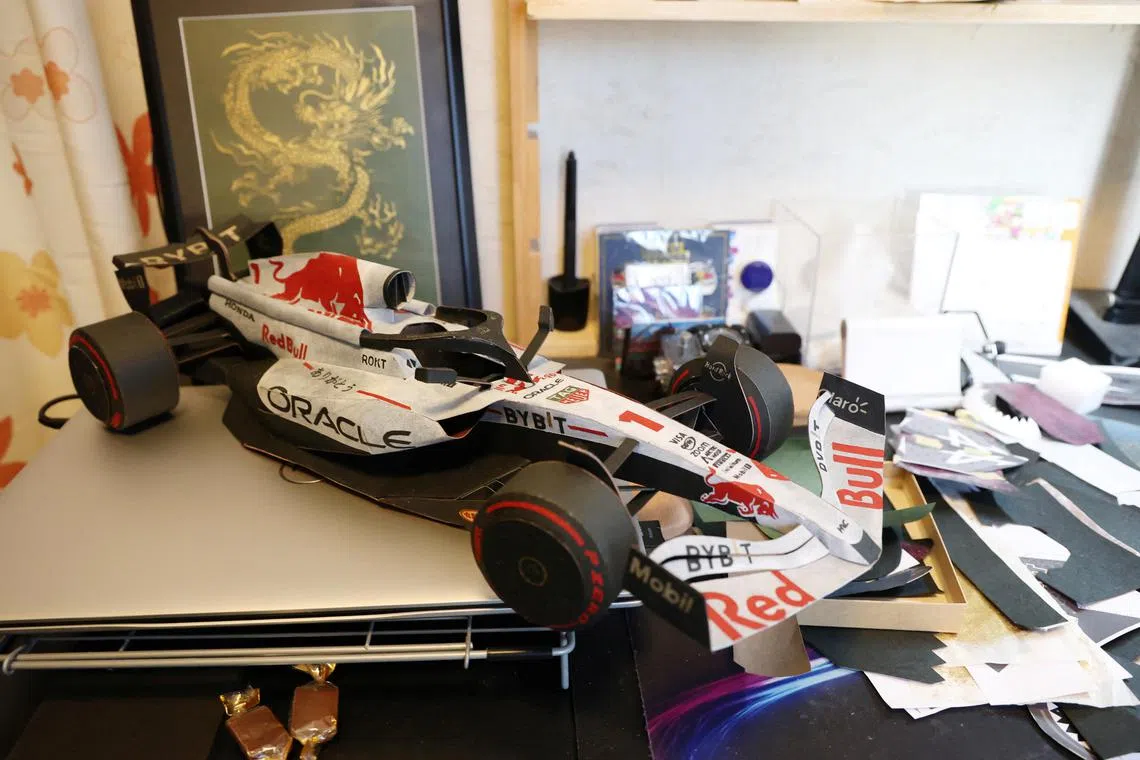Japan’s F1 host hopes calendar shift, weak yen will boost foreign fans
Sign up now: Get the biggest sports news in your inbox

An estimated 40,000 tickets were sold to international visitors in 2023, a four-fold jump since the years immediately before the pandemic.
PHOTO: REUTERS
Follow topic:
SUZUKA – The host of this week’s Japanese Grand Prix is hoping a calendar shift to one of the country’s peak tourist seasons and a cheap currency may bring in more international visitors to an event that traditionally has attracted a mainly domestic audience.
The Formula One race has been moved from its usual autumn slot, during the typhoon season when heavy rains have marred the spectacle in the past, to April 5 to 7, coinciding with the peak of Japan’s world-renowned cherry blossom, or “sakura”, bloom.
Japan’s weak yen, currently at multi-decade lows against the US dollar, is also driving a rebound in tourists following strict travel curbs imposed during the Covid-19 pandemic.
The race at the Suzuka track, a favourite among drivers due to its technical twists and high-speed straights, drew its biggest crowd in nearly two decades last season, driven partly by a bounce in overseas visitors.
“With the further depreciation of the yen and the cherry blossom season, we hope the number of international fans will be at the same level or even higher than last year,” said Eijiro Oda, general manager of Suzuka Circuit.
An estimated 40,000 tickets were sold to international visitors in 2023, a four-fold jump since the years immediately before the pandemic, according to Honda Mobilityland, which runs Suzuka Circuit.
In order to promote the race internationally, the circuit has for the first time began posting English content on social media, offering tips for travel and sightseeing.
One of the foreign F1 fans heading to Suzuka this weekend is Russian Aleksandr Kriukov, 42. “I want to see sakura (cherry blossoms)... and I want to see Suzuka. It’s a very good time for me. Spring is the best time,” he said at a F1 fan festival event in Tokyo.
Masumi Watabi, 49, who runs a restaurant selling Japanese fish cake stew in front of the Shiroko station, from where F1 fans usually take shuttle buses to the circuit, said he also hopes the growth in foreign fans can continue.
“Last year, we had an explosive growth in customers from abroad in my restaurant. This year... we hope that many overseas visitors will come in the spring, when Japan is at its most beautiful,” he said.
On Sunday’s race day last season, 80 per cent of customers were foreigners, he added.
Across town from the Suzuka Circuit, a centuries-old craft is also hoping to draw international interest, with artist Kenji Tanaka perfecting his latest Formula One paper model.
Born in the town of Suzuka, where the racing event was first held in 1987, Tanaka has for the last nine years been making intricate models of cars, steering wheels and trophies, and giving some of them to drivers.
He uses a method of paper stencilling called Ise Katagami that began in the region more than 1,000 years ago as a way to print elaborate patterns on kimonos, the national dress of Japan.
New technology and waning demand for kimonos mean the few craftsmen who practise the traditional methods are seeking new ways to promote the art form.
“I always go to see F1 every year. In 2015, I wanted to carve portraits into Ise Katagami and give them to F1 drivers as gifts. That’s how I started it,” said Tanaka who lives just a few kilometres from the famous track.
Some of his artwork and a picture of former world champion Sebastian Vettel clutching one of his model trophies are on display in the town hall. He plans to give a model steering wheel to Alpine driver Esteban Ocon this weekend.
“While we value the technique itself, we also need to think of new ways to use it, otherwise it will not survive,” said Mitsuru Kobayashi, head of the Ise Katagami Cooperative Association.
REUTERS

